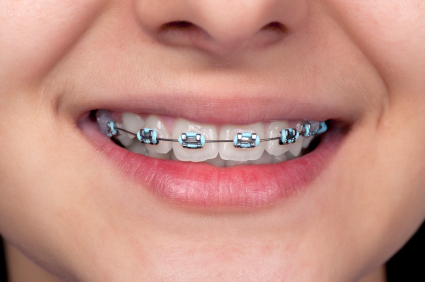When it comes to orthodontic treatment, braces are one of the most common solutions to straighten teeth and correct bite issues. However, many people hesitate to explore this option due to myths surrounding the ideal age for braces. A popular question often asked is, what is the best age for teeth braces? In this article, we’ll debunk the top myths about braces and age, clarify when braces are most effective, and provide useful insights about the process, benefits, and post-treatment care.
Introduction: Braces Aren’t Just for Kids
Many adults shy away from orthodontic treatment because they believe braces are only meant for teenagers. This misconception often leads to delays in getting necessary care, which can affect dental health and self-confidence. The truth is, braces can benefit individuals of almost any age. But before diving into treatment options, it’s important to understand the common myths and facts surrounding braces and age.
Myth 1: Braces Are Only for Teenagers
One of the most pervasive myths is that only teenagers should wear braces. While it’s true that orthodontists often recommend braces during adolescence, it’s not a strict rule. Children’s teeth and jaws are still developing, making it easier to guide growth during teenage years. However, adults can and do get braces successfully, often with modern options like clear aligners or ceramic braces that are less noticeable.
What Is the Best Age for Teeth Braces?
The best age for teeth braces largely depends on individual dental conditions. Orthodontists commonly suggest getting evaluated around age 7, when some adult teeth have emerged, to catch any early issues. For comprehensive treatment, the typical age range is between 12 and 14, when most permanent teeth are in place but the jaw is still flexible. However, many adults receive braces well into their 30s, 40s, and beyond with excellent results. So, there isn’t a one-size-fits-all age; rather, the best time depends on when you seek treatment and your specific needs.
Myth 2: Adults Can’t Get Braces Because Their Bones Are Fully Developed
It’s true that bone growth slows significantly after adolescence, but adult bones are still capable of remodeling. Orthodontic treatment relies on applying gentle pressure to teeth to move them through the bone. While it might take slightly longer for adults than teenagers, adults can definitely benefit from braces. Moreover, new technologies and treatment methods have made adult orthodontics more comfortable and effective than ever before.
Myth 3: Braces Are Only Cosmetic
While braces certainly improve the appearance of your smile, their benefits go far beyond cosmetics. Correctly aligned teeth improve chewing efficiency, reduce wear on teeth, prevent jaw pain, and promote better oral hygiene by making teeth easier to clean. This helps reduce the risk of cavities, gum disease, and other oral health issues in the long run.
Understanding the Braces Process: What to Expect
Whether you’re a teenager or adult considering braces, understanding the treatment process can ease anxiety and prepare you for what lies ahead.
Initial Consultation and Evaluation
During your first visit, the orthodontist will perform a thorough examination, including X-rays, photos, and dental impressions. This helps in diagnosing alignment issues and crafting a customized treatment plan.
Treatment Planning
The orthodontist will explain your options based on your dental needs and preferences. Options may include traditional metal braces, ceramic braces, or clear aligners like Invisalign.
Application of Braces
For traditional braces, brackets are bonded to teeth and connected by wires. The orthodontist adjusts the wires periodically to gradually move teeth into place. Treatment duration usually ranges from 12 to 36 months, depending on severity.
Regular Adjustments
Follow-up visits every 4 to 8 weeks allow the orthodontist to monitor progress and make necessary adjustments.
Benefits of Getting Braces at the Right Time
Getting braces during the ideal age window offers several advantages:
- More Effective Results: Teeth and jaws are more adaptable during adolescence.
- Shorter Treatment Time: Younger patients often experience quicker realignment.
- Improved Oral Health: Correct alignment reduces risk of tooth decay and gum disease.
- Boosted Confidence: Straighter teeth enhance appearance and self-esteem early on.
Post-Treatment Care: Maintaining Your Perfect Smile
Completing orthodontic treatment is just the beginning of maintaining a healthy, straight smile.
Retainers
After braces are removed, retainers are essential to keep teeth in their new positions. Retainers may be fixed or removable and need to be worn as instructed by your orthodontist.
Oral Hygiene
Good oral hygiene is critical to prevent cavities and gum issues, especially after braces. Regular brushing, flossing, and dental check-ups should continue indefinitely.
Follow-Up Visits
Periodic dental visits help monitor tooth position and oral health over time.
Frequently Asked Questions (FAQs)
Q: Can adults expect the same results as teenagers with braces?
A: Yes, adults can achieve excellent results, though treatment might take a bit longer due to reduced bone flexibility.
Q: Are braces painful?
A: Some discomfort is normal, especially after adjustments, but it’s manageable and usually subsides quickly.
Q: How long do I have to wear braces?
A: Treatment duration varies but typically ranges from 1 to 3 years.
Conclusion: Age Is Just a Number When It Comes to Braces
The myth that braces are only for a certain age group is simply not true. Whether you’re wondering what is the best age for teeth braces? or considering treatment at a later stage, the answer depends on your unique dental needs. Early evaluation, personalized treatment, and proper care can result in a healthy, confident smile at any age. If you’ve been delaying braces because of myths about age, now is the perfect time to consult an orthodontist and explore your options.





Comments